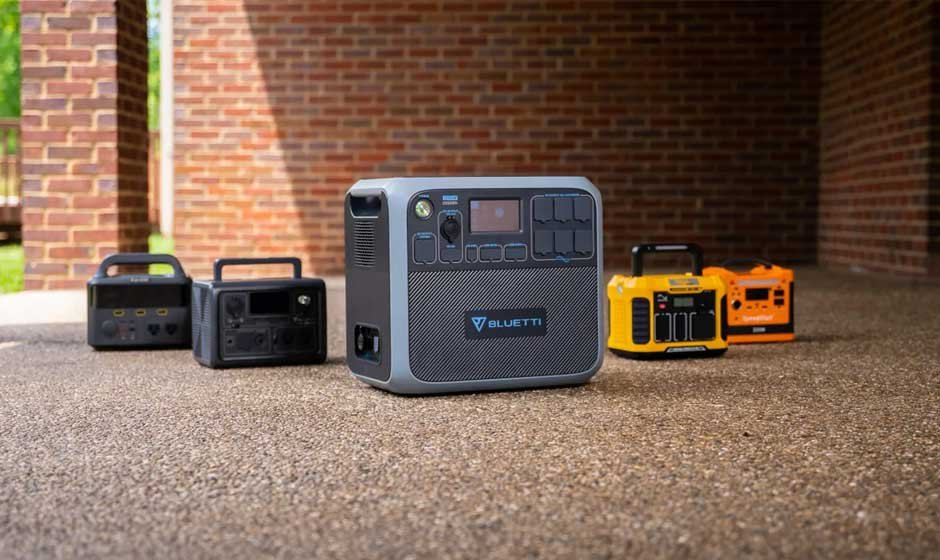Skip to the good bit
ToggleIn today’s fast-paced world, energy independence and mobility have become more important than ever. Whether you are camping in the wilderness, preparing for an emergency, or working remotely, reliable access to electricity is essential. Traditionally, a power station referred to large-scale infrastructure like coal, hydro, or nuclear plants that generate electricity for millions of homes and businesses. However, in recent years, the concept of a portable power station has gained significant traction, offering individuals and small groups a personal source of energy that can be carried anywhere.
This shift from massive centralized systems to compact, mobile solutions reflects both technological progress and changing consumer needs. Let’s explore how portable power stations compare to traditional power stations, their benefits, and why they are becoming a must-have tool for modern living.
What Is a Power Station?
A power station, sometimes called a power plant, is an industrial facility designed to generate and distribute electricity on a large scale. These stations rely on various energy sources, including fossil fuels, nuclear reactions, solar arrays, hydroelectric dams, or wind turbines. The electricity produced is then transmitted across grids to power cities, industries, and households.
Power stations are critical to the functioning of modern society. They ensure stable, large-scale energy supply and are built to handle immense demand. However, they also come with challenges such as high environmental impact, high costs, and vulnerability to grid failures or natural disasters.
What Is a Portable Power Station?
A portable power station is essentially a compact, rechargeable battery system equipped with multiple output ports, including AC outlets, USB ports, and DC carports. Unlike traditional generators, these stations don’t rely on gasoline or diesel but instead store electricity that can be replenished through wall charging, car charging, or renewable sources like solar panels.
Designed to provide power on the go, a portable power station is lightweight, quiet, and environmentally friendly. It can charge smartphones, laptops, drones, medical devices, and even small appliances like mini-fridges or CPAP machines. For outdoor enthusiasts, travelers, and those living in areas prone to blackouts, portable power stations are proving to be game changers.
Key Benefits of Portable Power Stations
- Portability and Convenience
Unlike a massive power station that requires acres of land and industrial machinery, a portable power station is small enough to carry in one hand or store in the trunk of your car. This makes it ideal for camping, road trips, or emergency kits. - Clean Energy
Traditional power stations often depend on fossil fuels, which contribute heavily to greenhouse gas emissions. In contrast, a portable power station can be recharged using solar panels, creating a renewable and eco-friendly energy cycle. - Quiet Operation
Gas-powered generators are loud and disruptive. Portable power stations, being battery-based, operate silently, making them perfect for campsites, RVs, and home use without disturbing the peace. - Versatility
With multiple output options, portable power stations can run or charge a wide range of devices simultaneously. Whether you need to keep your phone alive or run a small fan during a power outage, these devices provide reliable flexibility. - Emergency Preparedness
In an age of increasing natural disasters and unstable power grids, having a portable power station ensures you’re not left in the dark. It’s a backup source of energy for communication, medical needs, and basic comfort.
Comparing Portable Power Stations to Traditional Power Stations
- Scale of Use:
A traditional power station serves entire regions, while a portable power station is designed for personal or small-group use. - Fuel Source:
Most large power stations burn coal, natural gas, or use nuclear energy. Portable power stations rely on rechargeable batteries and, often, renewable inputs like solar. - Environmental Impact:
Large-scale power stations can pollute the environment and contribute to climate change. Portable stations, when paired with solar panels, are virtually emission-free. - Cost and Accessibility:
Building a full-scale power station requires billions of dollars and years of planning. A portable power station, by contrast, is accessible to everyday consumers at relatively affordable prices.
Popular Uses of Portable Power Stations
- Camping and Outdoor Adventures
Instead of relying on firelight or limited phone batteries, campers can power lights, portable stoves, cameras, and GPS devices. - Remote Work
With remote work becoming more common, many people are setting up workstations outdoors or while traveling. A portable power station ensures laptops, Wi-Fi hotspots, and phones stay charged. - Emergency Backup
During blackouts or natural disasters, a portable power station can provide crucial energy for communication devices, medical equipment, and small appliances. - RV and Van Life
For those embracing a nomadic lifestyle, portable power stations provide consistent electricity without the noise and fumes of traditional generators.
The Future of Power: Portable and Sustainable
While traditional power station will continue to play a vital role in powering cities and industries, portable power stations represent the future of personal energy independence. With advances in battery technology, especially lithium-ion and lithium iron phosphate (LiFePO4) systems, these devices are becoming more powerful, durable, and cost-effective.
Furthermore, the integration of solar technology means users can generate renewable energy on the go, reducing reliance on centralized grids and fossil fuels. As the world shifts toward sustainability, portable power stations are not just convenient—they’re a step toward a cleaner and more resilient future.
Conclusion
From the massive turbines of a traditional power station to the compact convenience of a portable power station, energy generation has evolved dramatically. While one powers entire cities and industries, the other empowers individuals with mobility, independence, and eco-friendly solutions.
In a world where flexibility and sustainability are increasingly valued, portable power stations are bridging the gap between large-scale infrastructure and personal energy needs. Whether you’re preparing for emergencies, enjoying the outdoors, or seeking a reliable off-grid solution, investing in a portable power station could be one of the smartest choices you make for a more secure and sustainable lifestyle.







